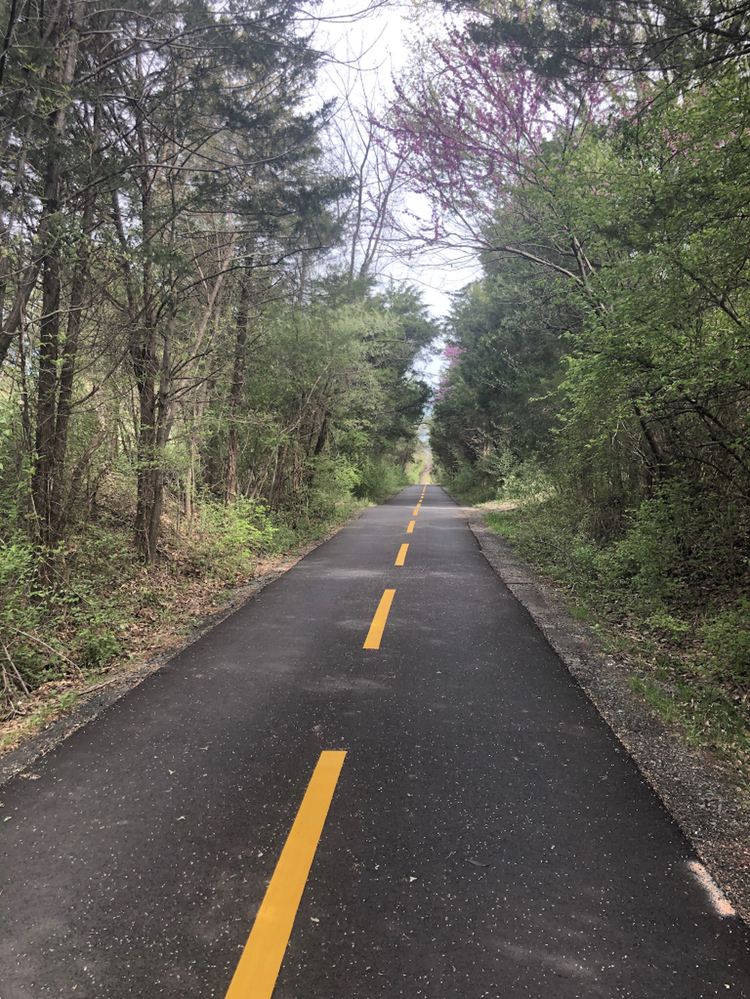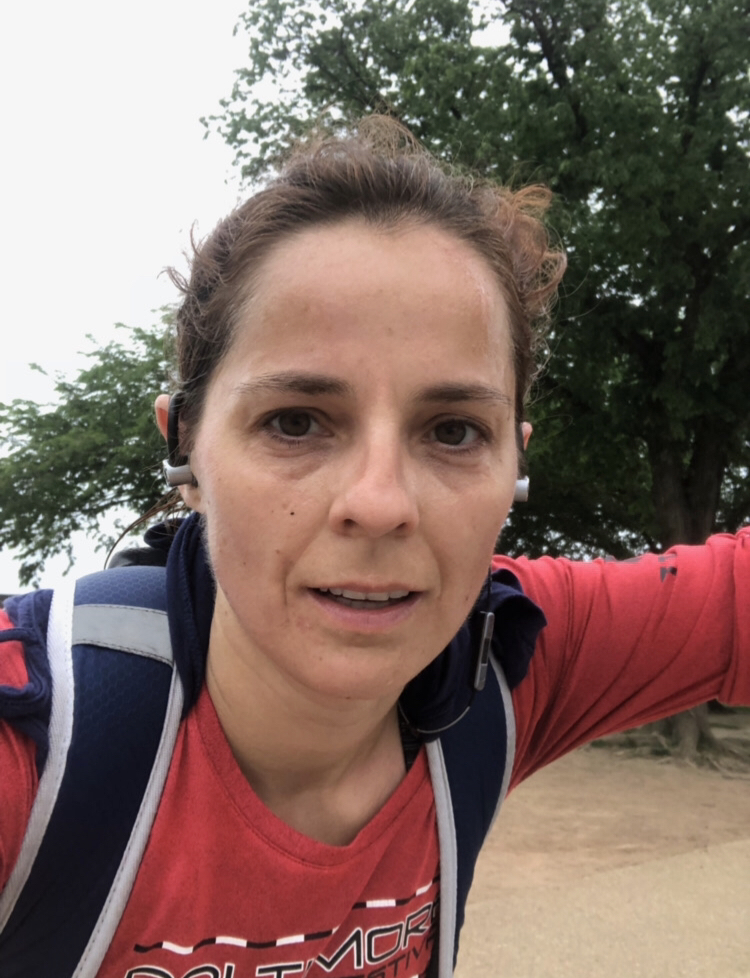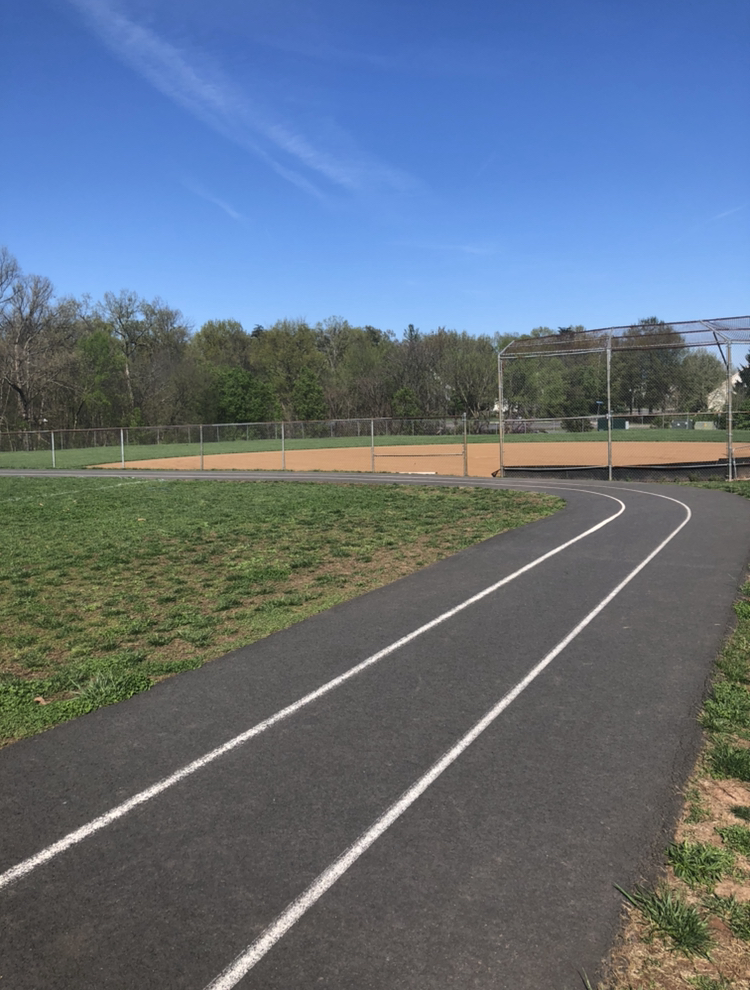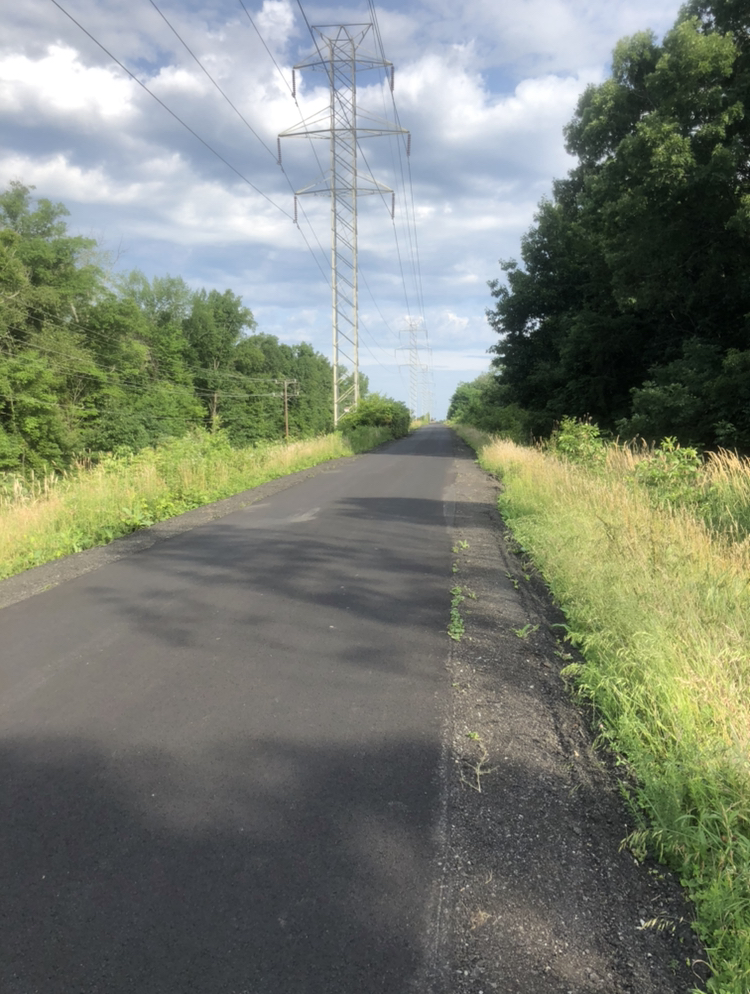When you decide to become more serious about running and look for a training plan or advice on how to improve, you get bombarded by terms you never heard of or that you don’t know what to do with.
Base run

Those are your bread-and-butter runs. I call them ‘just mileage’. They are meant to be on the shorter end of your range, up to mid-range and ran at your natural pace. I will admit it: these are my favorite and before I started marathon training, it was pretty much all I ever did. These days, those are mostly my commute runs. Main purpose of the base runs is to build your aerobic capacity. You also develop your endurance and running economy through your base runs. They are also your starting point for undertaking training plan.
Recovery run

Yes, I chose a picture of me running with my daughter (aka mini-me). I think it’s a pretty fair representation of recovery runs, since she keeps my pace slower and distance limited. When I am left to my own devices, I will get too ambitious and that recovery run will turn into more of a base run. These training runs usually follow particularly hard/long workouts and they are meant to be short and slow.
Most of us were led to believe that recovery runs help us recover faster by getting rid of lactic acid and accelerating muscle repair. However, it turns out that’s not how these workouts help. You are running in ‘pre-fatigued’ state, which promotes fitness gains. I actually just learned this. Good to know – I may actually start doing recovery runs on Monday after my long runs rather than just phoning it in.
Long run

If you are planning on an endurance race, hopefully you enjoy these. Long runs are meant to bring you to endurance level that will allow you to complete your race without running out of steam. For most races, you will probably want to get close or even over the distance you are planning to race. There is one notable exception to this: commonly, you don’t run more than 20 miles at a time, even when you are training for a marathon. To my surprise, when I was looking at Ironman training plans, they also capped running at 20 miles and even said you should not be doing actual marathons before your Ironman race. I am sure that for pros and people who do these all the time this may differ, but for us mere mortals, this is the rule. The reason behind the cap is relatively simple: running is a high impact sport and these kinds of distances take a toll on your body. You should not wear your body out before the race.
How to go about your long runs: they are meant to stretch your endurance, so naturally, you will be gradually increasing the distance (or pace). Once you have a solid base, you can start increasing distance by about a mile every week or two. Depending on your fitness level, your pace will be similar to that of your base runs or a bit slower. I have seen large number of variations on the long runs, with some including intervals, progressions and a number of other special elements. But the premise remains unchanged: not to run out of steam before you cross the finish line.
Progression run

I know this picture seems to have little to do with the progression runs, at least to majority of other people. But it is related to me, I swear. Progression runs are done usually over a distance you are comfortable with (although that’s not a requirement – it can be a part of your long run; I have been thinking about doing that actually). Your goal is to have negative splits, aka pick up pace in later stages of the run. This is a run with a main purpose of improving your stamina. It helps with getting faster without making you looks like you got run over by a truck. I can do these before work. Running intervals before work, on the other hand, tends too tired to be at my best all day.
How this picture relates: I struggle with it, but I always try to keep a steady pace until I hit the bridge over the Potomac and then go faster. It doesn’t always work well for me, since it’s when I hit uphills, but at the very least it’s an aspiration. And trying our best is all we can ask for, isn’t it?
Tempo run

I have a bizarre love for these workouts… If left to my own devices, I would probably do these only. I don’t do it, since I know perfectly well that we require variety in training for best results, but it doesn’t mean I can’t have my favorite workouts.
Tempo runs are about increasing your fatigue threshold and developing ability to run faster for extended periods of time. For a tempo run, you run at your lactate threshold, which is the hardest sustainable pace for you. If you are a fit runner, it’s a pace you can sustain for an hour, while for less fit runners, it’s for 20 minutes. The idea is to prolong time you can sustain higher pace. Yes, you may look like what I do on the above picture afterwards. But I do find those runs extremely satisfying and I will replace base and progression runs with these any time if nobody’s watching. I might end up there when I set out for a recovery run, too 😉
Fartlek

Another surprising picture? And yet again, it seems like it’s strangely appropriate to this type of a run to me. Fartlek is a speed workout, but not as structured as intervals. You mix some faster intervals into your run, with intention of building up your threshold. What differentiates fartlek from regular intervals is that the faster parts are not nicely planned and measured. And why running through DC and the National Mall comes to mind to me? Simple: because I run from a street crossing to street crossing, getting a rest at red lights. Since I know I will have to just stand there like a dummy, I sprint when I do get to run.
Intervals (sometimes called HIIT)

You will not catch me doing these on a track… They are usually done on a track, since it’s a flat, easy surface. However, I absolutely despise running on a track. At best, I will do my intervals on the road. That may increase my potential for injuries, but I just can’t run in circles… I’d rather do them on a treadmill (and even then only because I can watch movies on my phone).
But I digress. Intervals are bursts of speed over a pre-determined distance, alternating with slower periods. These workouts are what will make you faster by improving your running efficiency, giving you higher fatigue threshold and just making you able to move faster. They are indispensable to making you a faster runner. I would be interested though in hearing from somebody who genuinely enjoys these workouts.
Trail run

These are technically not usually listed, but I wanted to include them, since Meb was telling me how great it is to switch to running on trails. You can run most of your other workouts on trails, although intervals and fartlek probably wouldn’t be advisable. However, running on trails has a unique training benefit that makes me believe that it should be included in this list. They make your legs stronger by exposing them to quickly changing terrain. Your brain also needs to remain engaged, so you don’t hurt yourself by stepping wrong. Meb told me that trail practices make running in a road race appear easier and, therefore, you end up faster.
Hills repeats

Pictures never quite capture steepness of a hill, do they… Believe me, this is actually a good training hill on my run.
So here is how this work: find a serious hill, start at the bottom and run to the top. Turn around, make your way down at a slower pace and then back up that hill. Rinse and repeat… It will build up your aerobic power, endurance and pain threshold (because there will be pain if you do it right). Also, if you choose a hilly marathon, like me (Baltimore – no huge climbs, but a lot of short uphill bursts), it will help you make it to the end of the race. And if for no other reason: they will add some variety to your training. I can’t see people loving it any more than intervals, but hill repeats will provide you at least with a sense of pride when you are on top of that hill. I know it’s a small consolation, but sometimes we don’t need much to keep going…
Conclusion
I hope this introduction to running training lingo will be helpful. At the very least, it should help you sound like a member of the in crowd when talking to other runners over drinks. And, of course, understand what training plans (either found online or given to you by a coach or a friend) mean. Just my little contribution to making you feel like the insider in the world of amateur athletes 😉 Now go and conquer the world! The road is waiting for you and your shoes!
